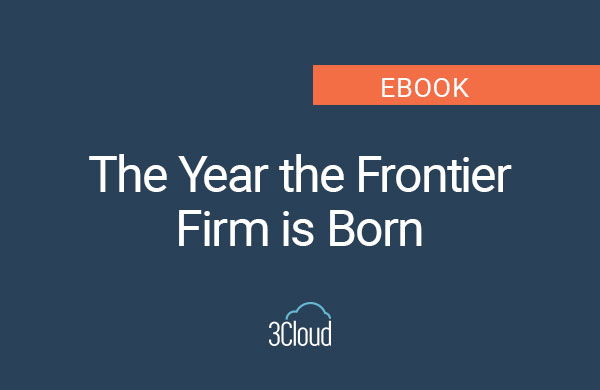Managing data effectively is essential for organizational success. Master Data Management (MDM) stands out as a vital strategy, providing companies with a systematic way to organize and utilize their most valuable asset—data. This blog post discusses the fundamentals of MDM, explores its key components, benefits, and implementation challenges. It also highlights future trends in MDM, emphasizing its critical role in driving organizational success and operational efficiency.
Understanding Master Data Management
At its core, MDM is the practice of ensuring that an organization’s critical data—such as customer information, product details, and financial records—is consistent, accurate, and reliable across all systems and applications. By establishing a single, unified version of truth for essential data elements, MDM enables companies to eliminate redundancies, reduce errors, and enhance decision-making capabilities. MDM supports seamless data integration, improving collaboration across departments and providing a holistic view of business operations. This comprehensive approach not only boosts operational efficiency, but ensures compliance with regulatory standards, safeguarding an organization’s reputation and reducing legal risks.
What Are the Key Components of MDM?
MDM encompasses several key components:
- Data Governance: Setting policies and procedures to manage data effectively, ensuring compliance and security.
- Data Integration: Bringing together data from disparate sources to create a comprehensive view.
- Data Quality Management: Implementing processes to maintain high standards of data accuracy and completeness.
- Master Data Modeling: Designing data structures and relationships to provide a holistic understanding of core business entities.
- Metadata Management: Managing information about data to improve its usability and context.
These components work in tandem to establish a robust framework that supports operational efficiency and strategic initiatives within an organization.
What are the benefits of implementing MDM?
The adoption of MDM yields numerous benefits including:
Improved Data Quality
Implementing MDM enhances the quality of organizational data by ensuring it is accurate, consistent, and complete across all systems and applications. This improvement reduces errors stemming from duplicate or outdated information, which in turn enhances the reliability of business operations. For example, in customer-facing processes like order fulfillment or customer support, accurate data ensures smooth transactions and timely resolutions.
Enhanced Decision-Making
MDM provides reliable and timely information to decision-makers within an organization. By establishing a single, authoritative source of truth for critical data elements (such as customer profiles, product details, and financial metrics), MDM enables executives and managers to make informed decisions quickly and confidently. This capability is crucial where rapid responses to market changes can mean the difference between success and missed opportunities.
Operational Efficiency
One of the significant advantages of MDM is its ability to streamline processes and workflows across departments. By integrating and harmonizing data from disparate sources, MDM eliminates redundancies and inconsistencies in data handling. This approach optimizes resource allocation, reduces costs, and improves overall productivity. For example, standardized customer data across marketing, sales, and customer service departments allows for more efficient cross-functional collaboration and a unified approach to customer relationship management.
Compliance and Risk Management
MDM plays a critical role in ensuring compliance with regulatory requirements and mitigating data-related risks. By maintaining accurate and up-to-date data, organizations can demonstrate compliance with data protection laws (such as GDPR or CCPA) and industry-specific regulations. Moreover, centralized data management under MDM enhances data security measures, protecting sensitive information from unauthorized access or breaches. This proactive approach not only safeguards the organization’s reputation but also minimizes legal and financial risks associated with data non-compliance.
Customer Experience
MDM enables organizations to deliver personalized and improved customer experiences. By consolidating and maintaining accurate customer data profiles, businesses can better understand individual preferences, purchase history, and interaction patterns. This holistic view allows for personalized marketing campaigns, targeted promotions, and tailored customer service interactions. As a result, customers feel valued and understood, fostering satisfaction, loyalty, and advocacy for the brand.
Read the case study: Data Governance & MDM Empowers Financial Service Company
What are the challenges in MDM implementation?
Despite its advantages, implementing MDM poses some challenges. These include:
- Complexity: Implementing MDM involves managing diverse data types from various sources and integrating them with existing legacy systems, which requires meticulous planning and robust data integration capabilities.
- Change Management: Overcoming organizational resistance to new data management practices is crucial; it involves educating stakeholders about the benefits of MDM and implementing effective communication and training strategies to ensure widespread adoption.
- Data Security: Ensuring data security is extremely important during MDM implementation, as consolidating and centralizing data increases the risk of cyber threats; organizations must deploy robust security measures such as encryption, access controls, and regular audits to protect sensitive information.
Navigating these challenges requires a comprehensive approach and commitment from stakeholders at all levels of the organization.
What are the future trends in MDM?
Looking ahead, advancements in technology—such as artificial intelligence (AI) and machine learning (ML)—are poised to significantly reshape MDM capabilities. These innovations promise to automate data management tasks, enhance predictive analytics, and further optimize processes. AI and ML can automate the identification and correction of data errors, ensuring higher data quality with minimal human intervention. By leveraging these technologies, organizations can implement more sophisticated data matching, deduplication, and enrichment processes, making their data even more reliable and comprehensive.
Additionally, the rise of cloud-based MDM solutions offers flexibility, scalability, and cost-efficiency, enabling seamless data management and integration from various sources. As data privacy regulations become more stringent, MDM systems will increasingly incorporate advanced data governance features to ensure compliance. The future of MDM will be characterized by greater automation, enhanced data quality, improved compliance, and the ability to handle vast and varied data sources, positioning organizations to leverage their data for strategic advantages.
Conclusion
By establishing a solid foundation of accurate, integrated data, organizations can unlock new opportunities for growth, innovation, and operational excellence. Embracing MDM ensures that organizations are well-equipped to navigate complexities, capitalize on emerging trends, and sustain long-term success in a dynamic marketplace. Interested in learning more? Contact 3Cloud to get started today.




